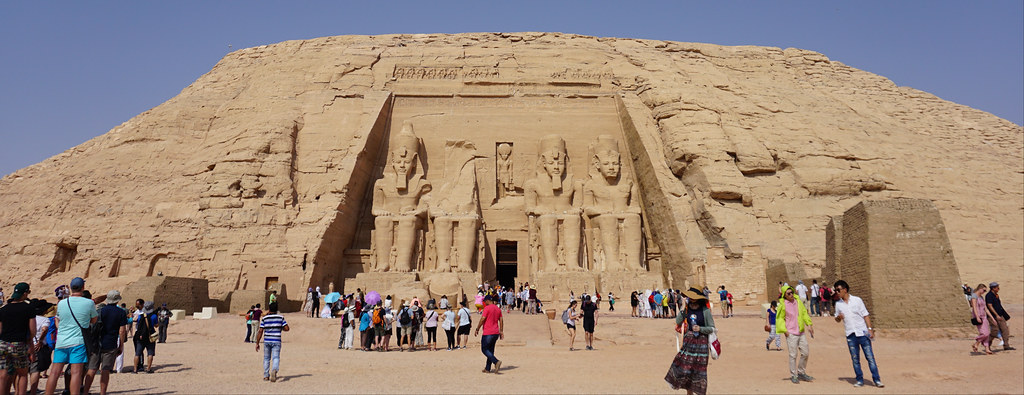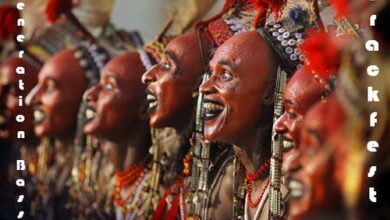King Ramesses II: Facts, Mummy and Temples of Ramesses II

One of the most well-known Egyptian monarchs who reigned during Egypt’s heyday was Ramesses II.
He is Egypt’s third and strongest pharaoh of the 19th dynasty. Prince Ramses, who later became Ramses II, received the throne from King Seti I.
Ramesses II took part in military operations with his father where he obtained valuable military and kingship experience before he was a king. He was given a home and harem.
Answers to the most frequently asked questions concerning Ramses II’s history are provided below:
Also Read: Ancient Queens of Egypt Who Shaped History
Ramesses II, who is he?
Ramesses II was among the most powerful and well-respected Pharaohs to rule Egypt during its heyday. He is the third and most powerful pharaoh of Egypt’s nineteenth dynasty.
Prince Ramses, who later became Ramses II, received the throne from King Seti I.
He oversaw multiple missions and concentrated on achieving his objectives. He earned the moniker “ruler of rulers” because of this, which mirrored his vision of a strong country.
Because of this, history aficionados revere him as “Ramses the Great.” Egypt was also at its pinnacle of strength and splendor during his 66-year rule.
Who are the children of Ramesses II? | Ramses II Early Life & Family
The number of women and offspring this great pharaoh had are also remembered. Although historians are unable to pinpoint a precise figure, they believe it to be close to 162 kids.
Amun-her-khopesh (Nefertari’s firstborn), Ramesses, Merneptah, Meritamen, Nebettawy, Khaemweset, and many others are just a few of the known offspring.
In actuality, his third son, not his first, was his immediate successor. Ramses was king for 66 years, which was longer than many of his offspring.
His 13th son Merneptah emerged as the future heir apparent. He was 60 years old as well.
In 1303 BC, Ramses II was born in a lower-class Egyptian household. He was the child of Queen Tuya and Pharaoh Sethi I.
Ramesses II was called after his military hero grandfather Ramses I, who turned his commoner family into royalty.
He was schooled and trained by his father while growing up in the Egyptian royal court. Ramses was fortunate to have this opportunity because his father ascended to the throne when he was only 5 years old.
Ramses’ older brother was the current heir apparent to the throne of Egypt at the time. He passed away, nevertheless, when Ramses was about 14 years old.
Ramses II, therefore, assumed the position of second in command during his father’s military expeditions and was next in line to succeed him as Pharaoh of Egypt.
He married Nefertari, who was his first and most cherished wife, after being anointed the Prince. She rose to prominence on her own and was known as the Royal Wife of the Pharaoh.
The royal pair had at least four boys and two daughters during their marriage, and maybe more.
Also Read: Are Egyptians Africans? Who exactly are the Egyptians—Arabs or Africans?
Ramesses II Facts
Parent: Seti I
Queen Tuya, the mother
the year 1303 BC
died in 1213 BCE.
KV7 was interred in the Egyptian Museum in Cairo and at Deir el-Bahari.
Nefertari, Nebettawy, Henutmire, Meritamen, Maathorneferure are examples of spouses. Isetnofret and Bintanath.
Ramses II has had 162 or more offspring, which places him tenth among all males in history.
What achievements did Ramses II make?
– Egypt’s Accession to the Throne and Military Might
Ramses was just 25 years old when he became the Pharaoh of Egypt in 1279 BC, following the death of his father.
He is renowned for having exceptional command over the Egyptian army. As a result, he was able to command ferocious fights to defend Egypt’s boundaries against the Hittites, Nubians, and Syrians.
Ramesses II defeated the Sherden sea pirates, who posed a serious danger to Ancient Egypt’s maritime trade, in 1281 BC. (Grimal 1992, pages 250–253).
Ramses II vowed to put a stop to it with chivalrous behavior and a sound strategic strategy. He positioned ships and men at strategic coastal locations while anxiously anticipating a pirate onslaught.
They were deftly taken by surprise in a violent naval fight as their boats got closer. Tyldesley (2000), page 53
The Battle of Kadesh, which was fought against a more powerful foe—the Hittite Empire—remains Ramses’ most well-known conflict.
During the close of his Fourth Year of rule, in May 1274 B.C.E., Ramses launched a military operation to retake the northern provinces that had been lost.
At that time, the youthful King led a little force of 20,000 soldiers in battle with the majestic Hittite army’s 50,000-man strength. It continues to be one of the earliest battles ever documented.
Ramesses II emerged as the war’s greatest hero despite the fact that the fight was unresolved (it was unclear who won or lost).
He valiantly engaged in combat, almost escaping death and recovering the capitals he had lost to his adversaries.
Also Read: Pharaoh of Egypt: List of Pharoahs that Ruled Ancient Egypt
Why did Ramesses II matter?
HONORED IN HISTORY FOR SIGNING THE VERY FIRST PEACE CONTRACT
Due to the fact that the Battle of Kadesh did not result in a decisive victory, the two nations remained on the verge of war for a number of years.
Ultimately, Ramses agreed to sign and abide by one of the earliest significant peace treaties in history with the Hittites in 1258 BC.
As a result, he became the first king to ever sign a peace treaty. Moreover, he was successful in creating a tranquil northern frontier that lasted the whole of Ramses’ tenure.
THE BEST WORKS OF RAMSES, BUILDINGS, AND MONUMENTS
Ramses II, who is known for being a master builder, was utterly enthralled with architecture. He masterfully constructed and repaired several monuments, buildings, and temples during the course of his 66-year rule.
The enormous temples of Abu Simbel and Ramesseum are two of his most celebrated creations. In terms of scale, intricacy, and design, both of these monuments represent a new architectural style.
The enormous statue of Ramesses II himself is another distinctive aspect that unites these two temples.
The magnificent Abu Simbel temple, which was constructed in Nubia in Southern Egypt, is still visible today.
At the entrance of Abu Simbel, there are four enormous statues of the legendary Ramses II, each standing at a height of around 20 meters.
On the banks of the Nile River, the Ramesseum Temple was built and used as Ramses’ funerary temple.
Together with these temples, Ramses also constructed Pi-Ramesses, the new capital of ancient Egypt. As the King’s reign continued, the city developed a remarkable infrastructure, several enormous temples, and a vast royal complex.
Also Read: Pyramids of Egypt Mysteries
Temple of Ramses II

Several temples were constructed by King Ramesses the Great. The first one is the Temple of Abu Simbel, which he built as a personal shrine to the great Egyptian gods.
The other three are the Ramesseum, a minor temple dedicated to his wife Nefertari, the Delta temple dedicated to Pi Ramses, and the Great Temple of Karnak.
The Nile River Delta was where Ramses II’s family lived, therefore he constructed a city for himself there named “Per Ramessu,” which translates to “house of Ramses, biblical Ramses.” His city was renowned for its magnificent waterfalls, orchards, and gardens.
Ramesses II lived a life that was very long, especially for the period in which he lived.
He had outlived many of his wives and children by the time of his death at the age of 90, but his long life and comparably lengthy rule as king allowed him to leave behind a significant building legacy.
The Ramesseum, a massive memorial temple near Luxor, on the West Bank, and the well-known Temples at Abu Simbel, which delineated the southern limit of his reign, are two of the biggest structures in Egypt that are attributed to Ramesses the Great.
He also made improvements to or renovations to other well-known monuments.
Ramesses II renovated the Luxor Temple in the city of Luxor, adding sculptures and reliefs that tell the story of his achievements.
In an effort to claim them as a part of his legacy, he also made contributions to the Karnak temple complex and put his cartouche on a great number of other monuments.
Another striking structure is the magnificent tomb of his wife, Nefertiti, which is located in the Valley of the Queens, as well as the enormous statue of him that was discovered in Memphis, close to Cairo.
The two enormous Ramesses sculptures in the historic city of Memphis
It is important to note that the discovery of the two enormous sculptures close to the temple of the god Ptah, where Ramses took care to maintain his presence among the gods of ancient Egypt, is evidence of his desire to establish himself as a legendary character.
Also Read: How The Story, Birth of Jesus And The Bible Was Copied From Ancient Egypt Spirituality
How The Story, Birth of Jesus And The Bible Was Copied From Ancient Egypt Spirituality
King Ramses II died away when?
Ramses’ reign gradually came to an end, as do all wonderful things. He was originally laid to rest in KV7 in the Valley of the Kings on Thebes’ western bank after he passed away at the age of 90 from “Arthritis.”
Ramses was an outstanding ruler and a strong monarch who won praise for sustaining and expanding the boundaries of the Egyptian empire.
Ramses had a magnificent burial chamber, just like Queen Nefertari’s tomb, which is one of the most well-known examples of ancient Egyptian architecture.
Yet the mummy was moved to an unidentified location to keep it secure from the thugs.
Then, in 1881, it was unearthed in a secure royal stash in Deir el-Bahri. The great pharaoh’s mummy was eventually put in the Egyptian Museum in Cairo, where it is still located as of 2007.
The British Museum in London is home to one statue of the pharaoh Ramesses II, known as the Younger Memnon. This statue, which dates to circa 1250 BC, shows him as a kind king and a great warrior.
Also Read: God of Osiris – Egyptian God of the Underworld
LEGACY CONTINUES!
In 1974, the Cairo Museum’s Egyptologists noted that the mummy of Ramses II was deteriorating quickly. It was decided to take his mummy by plane to Paris for an in-depth investigation and a medical checkup.
The former Pharaoh received an Egyptian passport with the title “King of Egypt” as his occupation (deceased).
The great pharaoh was determined to have sharp features, including a pointed nose and a powerful, sculpted jawline.
He was also allegedly a redhead with a tall, athletic build.
The Monarch was revered by his people as the “Great Ancestor,” and his succeeding pharaohs adopted the name Ramses in his honor.
He aided the Egyptian civilization in every way since he was the second-longest-reigning King of ancient Egypt.
The holy statues and monuments he built are still standing today and bring in large sums of money for the Egyptian tourism sector.





